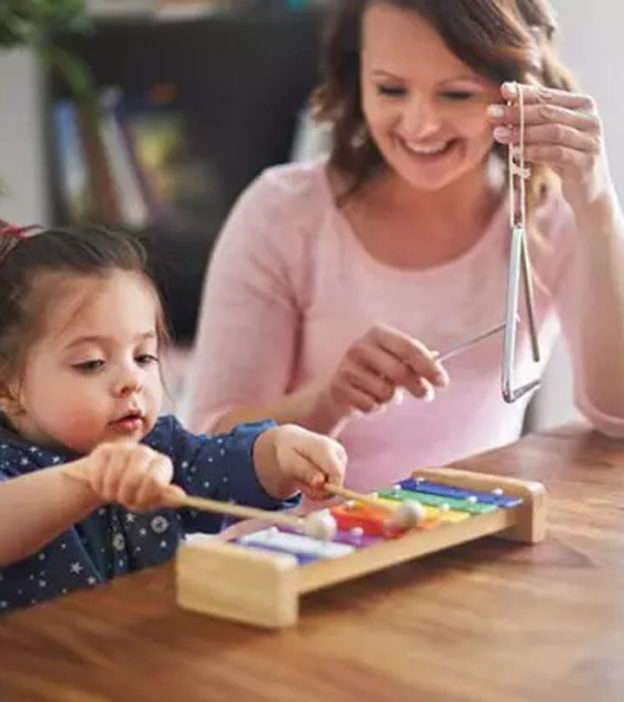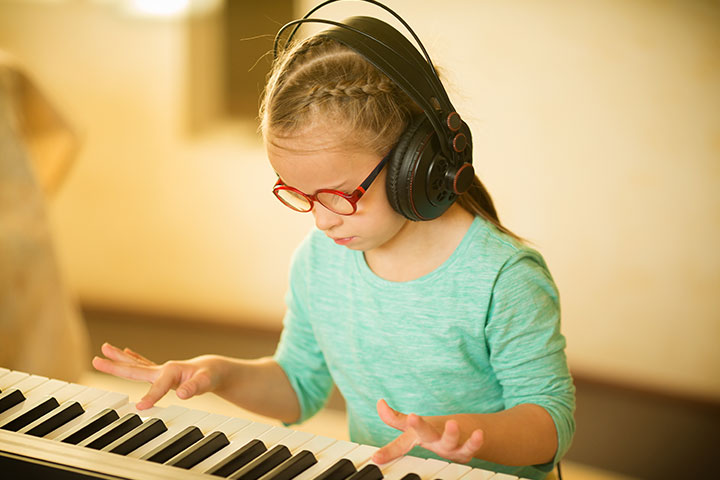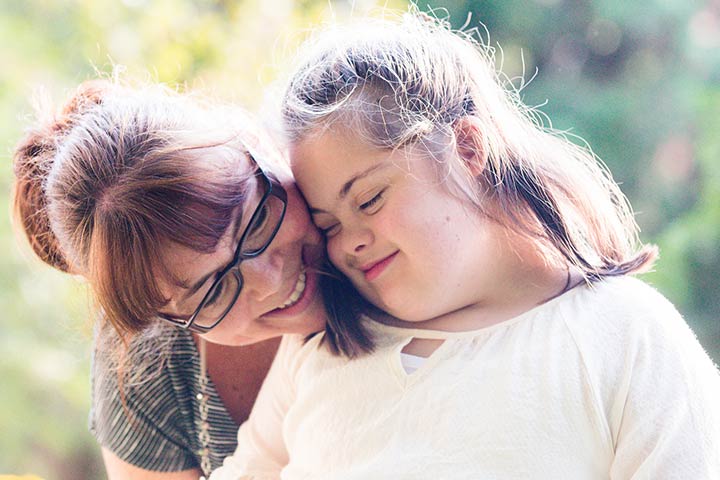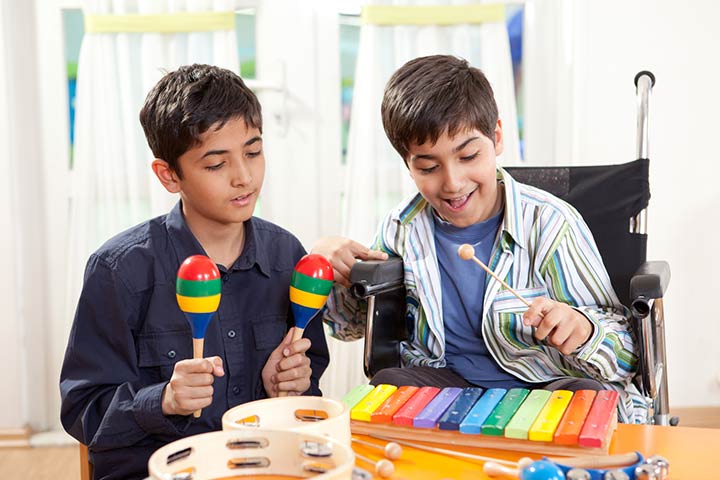
Image: iStock
Music can make you smile, cry, or dance! But one thing is sure that it has a very deep impact on our soul. It is one of those things that you don’t need to understand to enjoy- music has no language. Didn’t you ever play some good music in the shower, in the kitchen when you cook, or on a date night? It makes us feel good. Music surely helps if you’re getting back home after a rough day at work. But, it can do a lot more than that, especially for children with Autism Spectrum Disorder (ASD) (1).
What Is Music Therapy?
Music therapy is a widely recognized professional health discipline that uses music to achieve non-musical goals like learning and skill acquirement. According to research, music has the ability to influence speech, singing skills, the memory of academic content, rhythm and motor behavior, mood, attention, and general behavior. There is scientific evidence that proves that there is a strong connection between music and students’ ability to learn and interact (2).
Music is processed by a part of the brain that is different from the one that processes speech and language. This is why children are able to understand things better when they are presented in the form of songs (3). Now you know why the alphabet song is sung and not read!
What Is Autism Spectrum Disorder?
ASD is a neurodevelopmental disorder. If someone is affected by ASD, they will have persistent issues like weak social skills (communication and interaction) and repetitive behavior and interests. They may also have identifiable impairment in social, developmental, occupational and daily functioning. According to studies, it is estimated that 25-61% of people suffering from ASD do not have functional speech. Even for the rest, it’s restrictive (4).
Benefits Of Music Therapy
With around 5 million children with learning disabilities, looking beyond traditional medication becomes vital (5). As we discussed earlier, studies have proven that music therapy is promising for individuals with ASD. Children with learning disabilities are introduced to melodic and rhythmic strategies just for initial assistance. Later on, the musical cues will be slowly removed so that they can understand the general way of learning (6).
A study that was published in 2014 to evaluate the effectiveness of music therapy found that 58% of the cases showed positive results and for the rest 42%, it was mixed. This clearly gives us an idea about the effectiveness of music therapy for people who have ASD (7).
The study focused on variables like lowering the chances of undesirable behavior, encouraging social interaction, increasing independent functioning, enhancing understanding of emotions, and increasing communication. It used songs with lyrics that can be related to a particular skill. The pool of 12 studies includes subjects who were mostly around the age of 3 to 38. 147 participants within these 12 studies were analyzed after subjecting them to music therapy. 10 among these 12 studies had 77 males and 8 females (8).
Who Can Help?
Music therapy can be given by licensed professionals only. It requires a certain number of skills and expertise, especially when dealing with children with ASD. According to The American Music Therapy Association, it requires a person to at least have a bachelor’s degree in music therapy. Apart from that, they should also complete at least 1200 hours of clinical training. Make sure you seek the help of a certified therapist for your child or any of your loved ones (9).
Music has always been like magic, you never know the power that it has when it comes to healing. For people who have ASD, music therapy has proved to be a boon that opens new doors for them. With more and more research conducted in the area that explores the benefits of music therapy, we can hope to reap better than we expected. If we can ease any kind of disorder or disease without the help of medicines, wouldn’t that be the best?


















